One of my favorite sections of the park is that known as Greenbriar. Here await several junctions of trails, and many starting points for pure trout fly fishing: Middle Prong of the Little Pigeon, Porters Creek and Long Branch et al.
In the summer the “fancy-ass” fly rodders hit the lower flows decked in super expensive kick-butt waders below, strangled above by boxes of lanyard flies and tippet around their sweaty necks and six hundred buck Orvis fly rods whipping the air in dragonfly wavelengths.
In the summer waders are laughable, hell even in the winter, just learn rock-hoppin and you’ll set yourself up for that cast. Cheap rods work better, or at least let’s say just as effective, there is no heroic casting here. (OldTimers of the hills achieve the same effects with 16 ft. cane poles.)
Awright, this is hellish digression, but I s’pose I was just thinkin’ a little extra of the spring (I’m not knockin the frigid fun of winter trout fishin ‘neither – tis a pleasure.)
As for hiking –the lower confluence of these many streams I’ve explored and learned for years. Remnants manifest of old life here in the days when this lowland known as Porters Flats supported several family homesteads among the hemlock since the 1800s (all human habitation was ceased in the confines of the Great Smoky Mountains National Park in the 1930s due to eminent domain and such.) Their rock-stacked farm walls often remain:

The National Park Service preserves one of the original Hiking Association of the Smoky Mountains cabins that sits in the upper end of the flats. Inside the frames of old bunks protrude from the walls in wooden rectangles, the steel weave for one’s sleeping pallet still intact, waiting for a now forbidden slumberer.
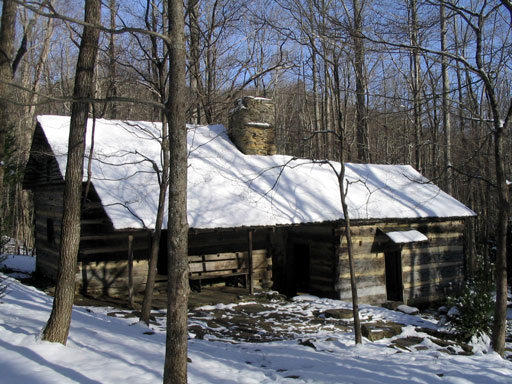
The path really begins at the lower end of Brushy Mountain and starts a twisty climb toward the peak from here; nothing intense but steady and wrapping around the inclining ridges. My father and constant hiking companion, who’s 63 yrs old and more agile around these mountains than folks less than half his age (very very easily I’ve seen), notices the first track of the day, a coyote:
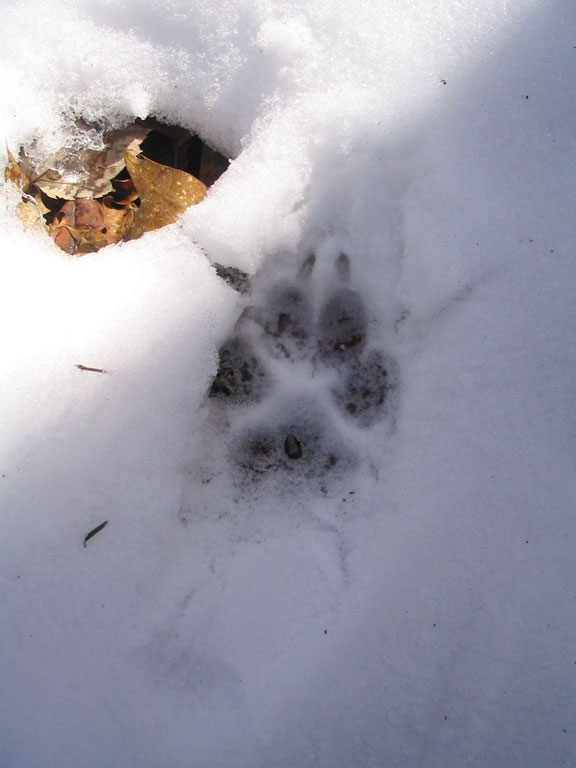
And this particular coyote, after being joined by another of his mates (later), are all we have to follow up this tract for several miles; easy though since nobody treks this trail much, especially in winter, and the tracks are pristine:
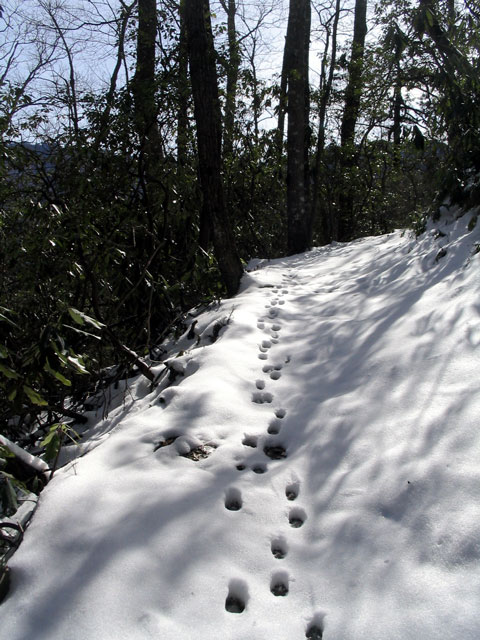
The snow thickens and so do the icicle formations with altitude even though the day is easing into warmth and definite snow meltage at the lower elevaions:
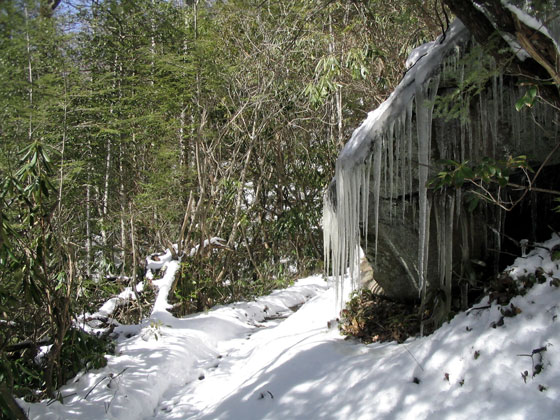
Yet as the trail thunks on the snow starts to deepen. First it gets above your boots and (no gaiters dammit silly oversight) then it slogs the pants in capillary fashion, but if you’ve sloshed it enough it never bothers anymore. All that presents worthwhile is the body in motion and silent tune humming with terrain in hampered syncopation. Ridges here stick out like splayed fingers to be walked in and around and back in again, but before too long Trillium Gap and the stretch to the top amongst the snow-flattened sand myrtle and mountain laurel is just simply there
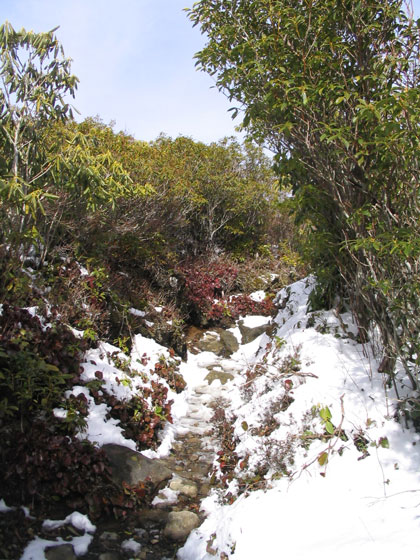
Along the gentle slope to the top of Brushy Mountain the views are as magnificent as a winter’s day can provide. To the east and slightly south encroaches Porters Mountain and its watershed. Hmm. now that I think about it I’ve never been up there at all….well no trails there but I’ve got my compass and quadrangles…plenty enough….but I’ll wait till summer I guess….
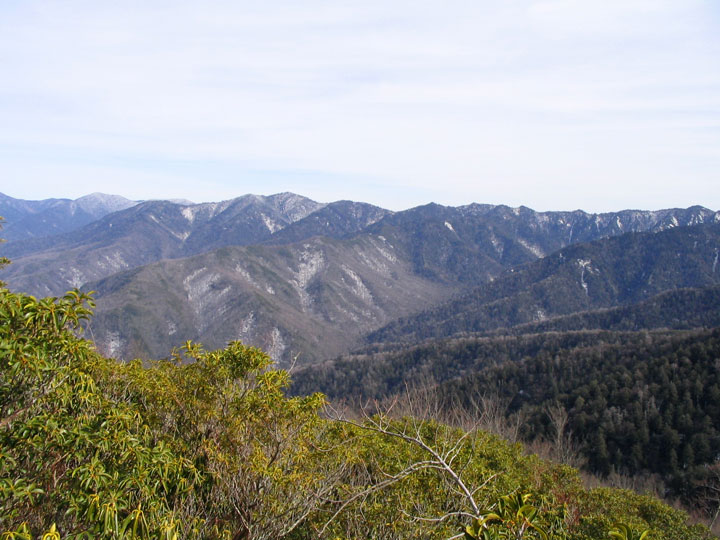
A slight turn north and there sits Greenbriar Pinnacle, quaint, eroded, and waiting, I think, for people to just go the hell away. The Appalachians are the oldest mountains in the world I think. Old, very old. Their ten thousand foot peaks eroded eons before humans were conceived, and they will stand long after being parceled and designated by homonids…. as though a mountain is ever quantified. Author Robert Morgan said: “The Mountains Won’ t Remember Us.”
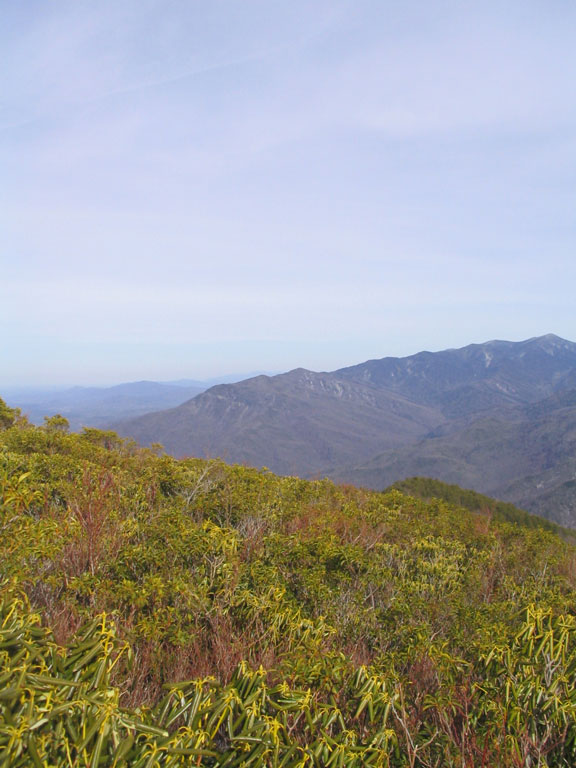


Leave a Reply
You must be logged in to post a comment.